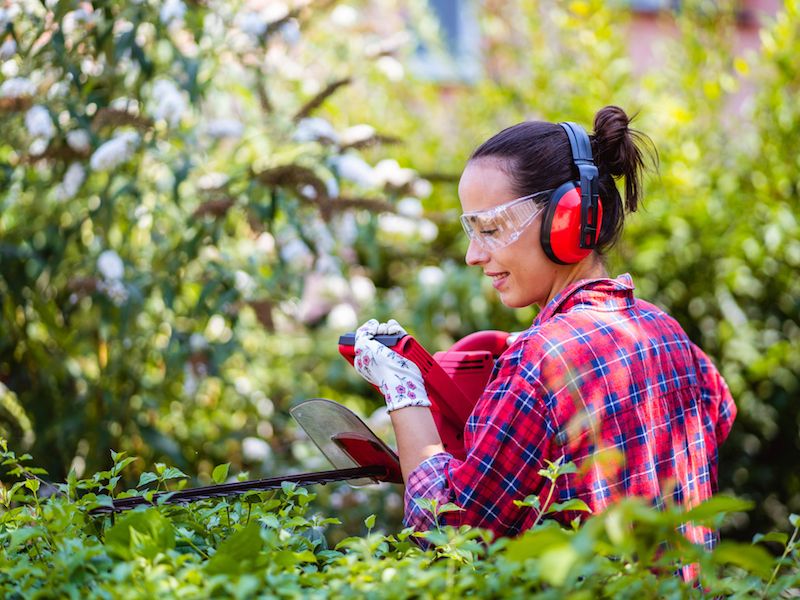
Protecting your hearing is much like eating the right way. It’s hard to know where to begin even though it sounds like a good idea. If there aren’t any noticeable noise risks and you don’t consider your daily environment to be especially loud, this is especially true. But your ears and senses can be stressed by daily living, so doing these hearing protection techniques can help safeguard your auditory acuity.
The more you can do to slow down the degeneration of your hearing, the longer you’ll be able to enjoy the sounds around you.
Tip 1: Hearing Protection You Can Wear
The most simple and sensible way that you can safeguard your ears is to protect your ears. This means that diminishing loud and dangerous sound is a basic step you should take.
For most people, this will mean using ear protection when it’s called for. Hearing protection commonly comes in two basic forms:
- Ear Muffs, which are placed over the ears.
- Ear Plugs, which are put in the ear canal.
Neither form of hearing protection is inherently better than the other. Each style has its positive aspects. Your choice of hearing protection should, most importantly, feel comfortable.
Tip 2: Be Aware When Sound Becomes Harmful
But how can you tell when to wear hearing protection? Noise that is painful is commonly regarded as harmful. But the truth is that sounds can start to damage your hearing at a much lower level than you might anticipate. After just a couple hours, for instance, the sounds of traffic are enough to injure your ears. An essential step in safeguarding your hearing, then, is recognizing when sound becomes harmful.
Typically sounds become harmful at the following thresholds:
- 85 decibels (dB): This level of sound is dangerous after around two hours of exposure. Your hairdryer or a busy city street are both scenarios where you will find this level of sound.
- Over 100 dB: Your ears can be very rapidly damaged by this. Damage is done in around thirty seconds with anything above this limit. Jet engines and rock concerts, for instance, can damage your ears in around thirty seconds.
- 95-100 dB: This is the normal volume of your earbuds or the level of farm equipment. This volume of sound becomes harmful after 15-20 minutes.
Tip 3: Make Your Phone Into a Sound Meter
We can take precautions to minimize our exposure, now that we have a concept of what levels will be hazardous. But in day to day life, it can be difficult trying to gauge what is too loud and what isn’t.
Your smartphone can now be used as a handy little tool. Sound meter apps exist for every type of smartphone.
Having a live sound meter with you will help you evaluate everything you’re hearing in decibels, so you’ll have a much better concept of what hazardous levels actually sound like in your daily life.
Tip 4: Keep Track of Your Volume Settings
A smartphone with earbuds is usually the way people listen to music these days. Your hearing is put in danger with this combination. Over years of use, earbuds set to a sufficiently high level can cause significant damage to your hearing.
That’s why protecting your ears means keeping a focused eye on your volume management. You should never raise the volume to drown out noises elsewhere. And we recommend using apps or settings to make sure that your volume doesn’t unintentionally become hazardously high.
If your hearing begins to wane, earbuds can become something of a negative feedback loop; you could find yourself constantly increasing the volume of your earbuds in order to make up for your declining hearing, and in the process doing more harm to your ears.
Tip 5: Get Your Hearing Examined
You might think of a hearing exam as something you get when your hearing has already begun to diminish. Without a standard to compare results to, it’s not always easy to identify a problem in your hearing.
Creating data that can be used for both diagnostic applications and for treatment can best be accomplished by scheduling a hearing exam and screening. This will give you some extra perspective for future hearing decisions and ear protection.
Keep an Eye on Your Hearing
It would be perfect if you could always protect your ears without any difficulty. But there will always be challenges. So safeguard your ears whenever you can, as often as possible. Also, get regular hearing examinations. Hopefully, these tips will give you a good start.